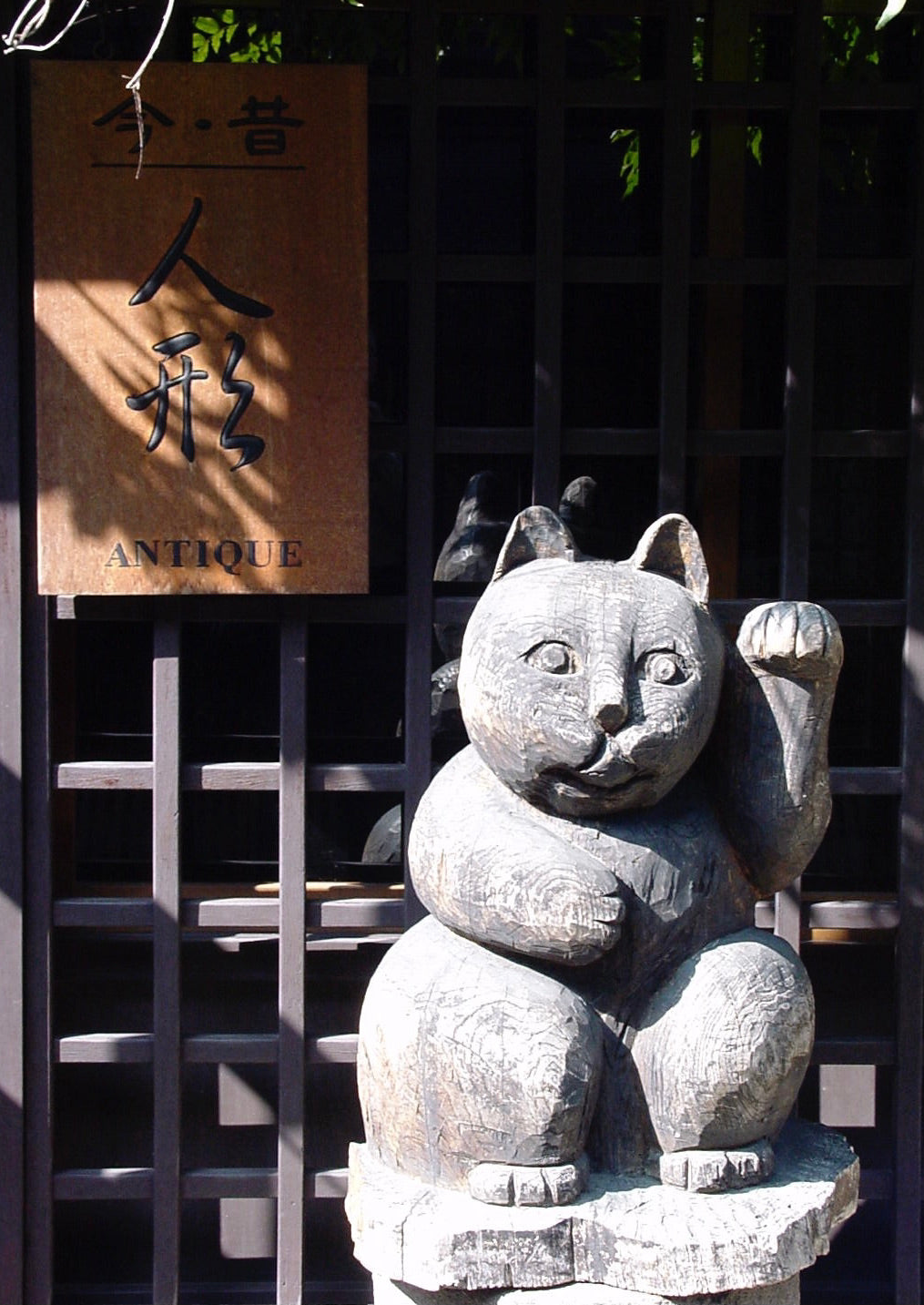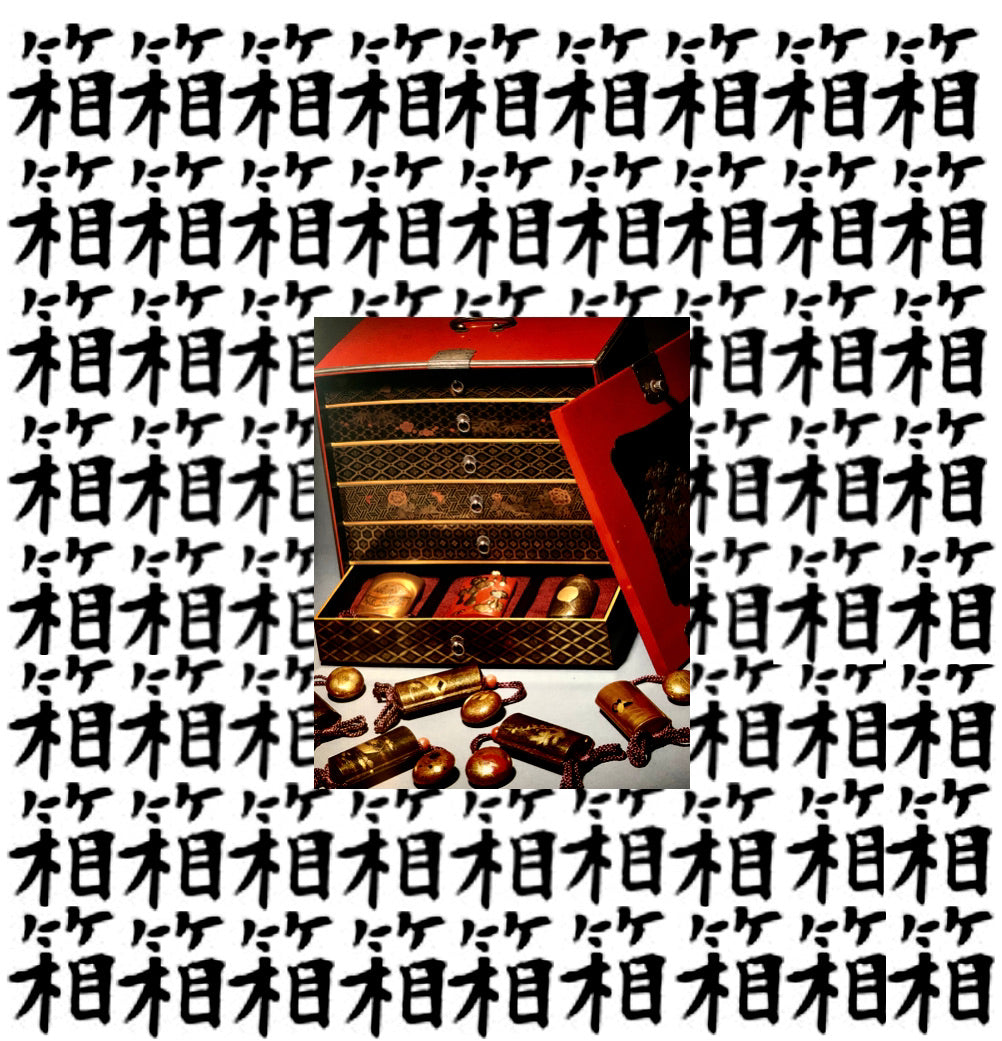There has been an increase recently in Japan in the number of people who have cats and their related items. It is said to be a boom for collectors of this type of craft. However, way before this recent surge, it was auspicious to have a “maneki-neko”, (beckoning cat / Mascot ornament), which usually has one paw forward, and makes this inviting gesture with its paw. A beckoning cat that raises its right paw is said to bring “wealth”, whereas one that raises its left paw is said to bring “companionship” and “happiness”.
The History of Maneki Neko

The legend of Maneki Neko is a reflection of the popularity and importance the cat has played in the history of Japan. There are several places believed to be the origin of maneki-neko, (beckoning cats). One of the legends tells about a high-ranking samurai passing by the Gotokuji Temple, in Setagaya-ku, Tokyo, where a storm was brewing, and a cat invited him into the front gate, so he rested inside. Violent thunder soon jolted the skies, accompanied by heavy rainfall, which the Samurai was able to avoid. Following that, the samurai donated a large sum of money to the temple, allowing the temple to expand and become financially secure. It was reported that at the beginning of the Edo period, the original small temple, where the expanded Gotokuji Temple now resides, housed a very poor monk who was accompanied only by his cat, named Tama, perhaps this very same cat that attracted the Samurai. After the cat died, it was buried in the Temple’s cemetery, and the Maneki Neko sculptures were made to honor the magical cat. Hence, the auspicious “maneki-neko” was born. As you see below, there are many maneki-neko lined up in Gotokuji Temple from donors and believe their wishes have been granted by maneki-neko.

Today, and for centuries, cats are extremely popular pets not only in Japan, but around the world. Nothing demonstrates this better than when the cat becomes part of a country’s culture, history, and mythology. There are countless superstitions about cats in Japan, (as there are in many other nations), assigning it either good or bad powers, benevolent or malevolent attributes. Some Japanese believe that when a cat washes its face and paws in a homeowner’s Genkan, (parlor, or welcoming pit, as referred to in Japan), visitors are coming. Additionally there is an old proverb: "If a cat washes its face and ears, it will rain." This may sound far-fetched, but many other nations hold equally curious beliefs in the soothsayer magic and powers of the feline. The cat has several names in Japan: Maneki Neko; the Lucky Cat; the Money Cat; the Beckoning Cat; and the Fortune Cat. It is not unusual to see Maneki Neko as Kanban, (shop signs), throughout Japan. They come in a diverse array of material; including pottery, ceramic, bronze, glass, papier mâché, wood, and stone.
Maneki Neko: Ceramics

Maneki Neko: Woodworks

Maneki Neko Kanban (Shop Signs)
This handcrafted piece below was purchased from a Kutani antique dealer who said it came from the Samurai district in Kanazawa and is a signed Japanese Kutani Porcelain Maneki Neko Erotica from the Meiji Period, (1880s), and said the paulownia box was not passed down when acquired. It has its right paw raised, (bringing wealth), and when turned over, it shows hand-formed details of the Dansei-ki, (human male genitalia, not animal). Signed pieces like this are extremely rare and seldom seen, and illustrates that Maneki Neko were utilized in all types of business during the 18th/19th centuries. History tells us that it unique for a beckoning cat was owned by an Oiran, because of the interests in the arts. This specific category of high ranking courtesan in early Japan was divided into a number of ranks and the Oiran was considered, both in social terms and in the entertainment world as one of the elite, above common women of ill repute, known as Yūjo,(woman of pleasure or beckoning woman).

Animals: An Enduring Tradition
Under the theme doubutsu-ga, (animal pictures), this print represent the humor, beauty, and mystery of the interaction between the citizenry and the animal world, appearing in numerous 19th and early 20th century woodblock prints, and contemporary Nihonga, (traditional Japanese paintings). Many depicted Kabuki and street dancers portraying a variety of entertaining tales related to animals, including the Maneki Neko from Japanese myth and legend.




